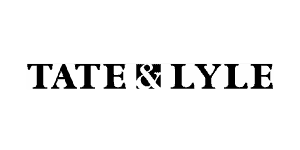There are various hazards in different workplaces. Businesses need to consider all of them to ensure staff and visitors won’t be in harm’s way. One of the most important to look at is the sound level. When it is too noisy it can cause all kinds of issues. It can harm employees, have an impact on performance, and hurt the reputation of the business. As a result, it is a good idea to consider noise control and workplace design as early as possible.
Key things
You can look at several different ways to reduce noise and make the workplace more pleasant. Many of them come back to the original design of the building and the spaces within it.
Layout
One of the easy things you can do is ensure you have the right layout. You don’t want to have noisy equipment in or near areas for quiet working. In fact, they probably shouldn’t be near areas where people spend a lot of time working.
A good thing to do here is plan your layout so you can segregate noisy equipment. Try to keep it to a far side of the property or somewhere else entirely such as a separate level or basement. The separation can protect people in other parts of the property. You should also do your best to make sure as few people as possible need to work in noisy areas and limit the time they spend there. Remote access systems can be incredibly useful.
Screens and barriers
You can go one step further with the workplace design and noise control by working to reduce the direct sounds. What you can do is install screens and barriers in the sound paths. They can prevent sounds from proceeding, either by directing them back where they came from or absorbing them.
A good strategy here is to have the screens and barriers as close to the noise sources as possible. It is the most effective way to stop it from breaking out. Having a sound absorbing material on the inner face will be even better because it will reduce how much sound bounces back.
What you need to look at here is the height and width of the screens and barriers. They are more effective when you increase how high and wide they are. Plus, you get better results when you use denser materials that block higher levels of sound waves.
You can also get better results if you look at the ceiling. What you don’t want is sounds to be bouncing back off the surface. Using acoustic absorption materials in the ceilings is a really good idea and can block reflected noise.
Refuges
Sadly some properties make it very difficult to achieve good noise control. In these cases the best solution may be to create noise refuges. These enclosures give employees quieter spaces to work in. They can reduce the amount of noise they are exposed to.
The crucial thing with refuges is you must design them with worker comfort in mind. Firstly, they must be properly insulated against noise. In addition, they must be large enough, have sufficient light, and have good ventilation. It is even important to think about the furniture and fittings, ensuring they are ergonomic.
It is also wise to ensure that workers will spend a sufficient amount of time working in the refuses. If they only spend a very small amount of a shift in one, it can only marginally reduce the exposure to noise. Ideally they should be spending the majority of shifts in them to see the biggest benefits and return on the investment.
Do you want some help with noise control?
Ventx can support clients in various industries with addressing noise. This can include some of the noisiest operations, such as manufacturing and petrochemical processing. Our goal every time is to help reduce sound as much as possible. We provide high quality silencers to do it.
So, if you are thinking about noise control, feel free to speak to us. We would be happy to assist.









